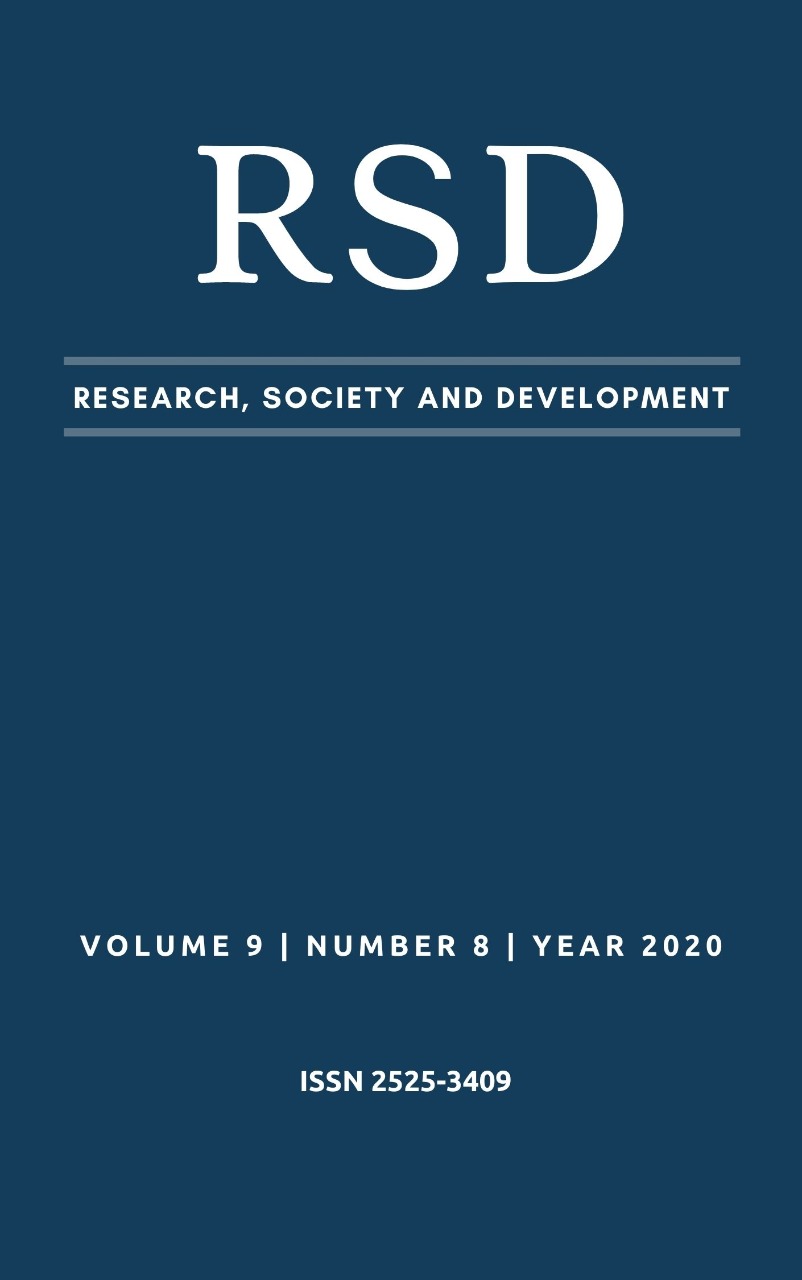Atividades didáticas em prol do cálculo mental
DOI:
https://doi.org/10.33448/rsd-v9i8.6057Palavras-chave:
Atividades didáticas, Cálculo mental, Anos Iniciais, Ensino.Resumo
Cálculo mental é aquele, exato ou aproximado, que é efetuado mentalmente, ou com anotações para apoiar o raciocínio, que não depende, exclusivamente, do uso de algoritmos e da contagem. Embora ele permita uma melhor compreensão da matemática e tenha influencia no futuro das crianças, esta ferramenta não vem sendo utilizada com todo o seu potencial. Para que sua utilização aconteça é preciso que os professores estejam conscientes de sua importância no processo de ensino-aprendizagem e saibam como abordá-lo. Esse estudo, caracterizado como uma pesquisa explicativa de caráter qualitativo, tem como objetivo estudar as principais estratégias de cálculo mental descritas na literatura, nos textos de Thompson (1999) e Butterwoth (2005), analisar os conhecimentos prévios necessários para cada uma delas e, por fim, elaborar sugestões de atividades didáticas. As atividades didáticas sugeridas foram baseadas basicamente nos apontamentos de Kamii & Jodeph (2005) e devem ser aplicadas a aprendizes nos anos iniciais, de forma regular, metódica e gradativa, visando o desenvolvimento dos conhecimentos necessários às estratégias de cálculo mental.
Referências
Ashcraft, M. H., & Krause, J. A. (2007). Working memory, math performance, and math anxiety. Psychonomic bulletin & review, 14(2), 243-248.
Brasil, M. E. C. (1997). Parâmetros curriculares nacionais: ciências naturais. Secretaria da Educaçao Fundamental.
Butterworth, B. (2005). The development of arithmetical abilities. Journal of Child Psychology and Psychiatry, 46(1), 3-18.
Carpenter, S. K., Cepeda, N. J., Rohrer, D., Kang, S. H., & Pashler, H. (2012). Usando o espaçamento para aprimorar diversas formas de aprendizado: Revisão de pesquisas recentes e implicações para a instrução. Educational Psychology Review, 24 (3), 369-378.
Duncan, G. J., Dowsett, C. J., Claessens, A., Magnuson, K., Huston, A. C., Klebanov, P., & Sexton, H. (2007). School readiness and later achievement. Developmental psychology, 43(6), 1428.
Fontes, C. G. D. (2010). O valor e o papel do cálculo mental nas séries iniciais. Dissertação de mestrado, Universidade de São Paulo, São Paulo, SP, Brasil.
Kamii, C., & Joseph, L.L. (2005). Crianças pequenas continuam reinventando a aritmética. Porto Alegre: Artmed Editora.
Parra, C. (1996). Cálculo mental na escola primária. Didática da matemática: reflexões psicopedagógicas. Porto Alegre, RS: Artes Médicas, 186-235.
Pereira, A. S., Shitsuka, D. M., Parreira, F. J., & Shitsuka, R. (2018). Metodologia da pesquisa científica.[e-book]. Santa Maria. Ed. UAB/NTE/UFSM. Disponível em: https://repositorio. ufsm. br/bitstream/handle/1/15824/Lic_Computacao_Metodologia-Pesquisa-Cientifica. pdf.
Santos, D. M., & dos Santos-Wagner, V. M. P. (2014). Cálculo Mental: diagnóstico de estratégias espontâneas de alunos do 6º ano. Revista Eletrônica de Educação Matemática, 9(1), 210-223.
Taton, R. (1965). Le calcul mental. Paris: Presses Universitaires de France.
Thompson, A. G. (1997). A relação entre concepções de matemática e de ensino de matemática de professores na prática pedagógica (Primeira Parte: 11-28). Zetetiké, 5(2), 11-44.
Thompson, I. (1999). Estratégias de cálculo mental para adição e subtração. Parte 1. Matemática na escola, 28 (5), 2-4.
Zancan, S., & Sauerwein, R. A. (2017). Método Líquen - Aritmética para os anos iniciais. Vivências, 13(24), 310-321.
Downloads
Publicado
Edição
Seção
Licença
Autores que publicam nesta revista concordam com os seguintes termos:
1) Autores mantém os direitos autorais e concedem à revista o direito de primeira publicação, com o trabalho simultaneamente licenciado sob a Licença Creative Commons Attribution que permite o compartilhamento do trabalho com reconhecimento da autoria e publicação inicial nesta revista.
2) Autores têm autorização para assumir contratos adicionais separadamente, para distribuição não-exclusiva da versão do trabalho publicada nesta revista (ex.: publicar em repositório institucional ou como capítulo de livro), com reconhecimento de autoria e publicação inicial nesta revista.
3) Autores têm permissão e são estimulados a publicar e distribuir seu trabalho online (ex.: em repositórios institucionais ou na sua página pessoal) a qualquer ponto antes ou durante o processo editorial, já que isso pode gerar alterações produtivas, bem como aumentar o impacto e a citação do trabalho publicado.


